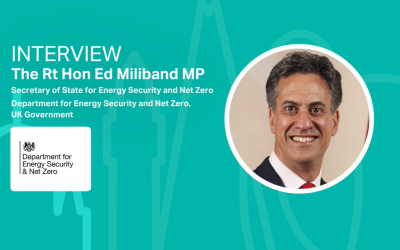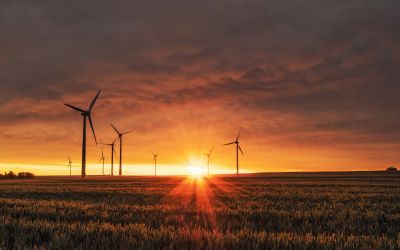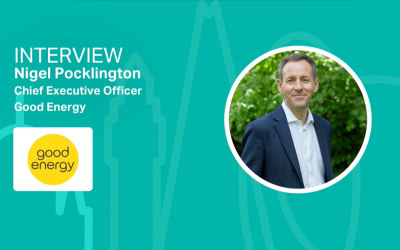Q&A Written Interview with Lori Kerr, CEO of FinDev Canada
In the run up to COP30 in Brazil, Climate Action caught up with Lori Kerr, CEO of FinDev Canada, to discuss how the organisation is planning to tackle climate adaptation and mitigation in these uncertain times.

1. As a bilateral development finance institution, what sets your work apart in today’s global development landscape?
In a world of limited fiscal space and unlimited global development challenges, we recognize the urgency – and opportunity – to leverage all parts of the system – in-country partners, donor agencies, multilateral development banks, and bilateral development finance institutions (or DFIs). Bilateral DFIs are proud to be part of a broader ecosystem working to unlock private sector-led growth in emerging economies.
As bilateral DFIs, we contribute to shared goals – economic growth and resilience, climate and environmental action, and social progress. Our nimble way of working, client service, and trusted bilateral relationships offer complementary value within the multilateral system – value that holds is ripe to be further leveraged.
As Canada’s Prime Minister said in Kananaskis recently, “Canada is ready to create new partnerships and… lead member nations into a new era of global cooperation.” FinDev Canada has proactively taken this call to action by engaging in a range of new partnerships.
One such new partnership is the G7 Infrastructure Investment Council, which includes twelve institutional investors with assets under management of over US$19 trillion. The Council seeks to design and deploy new investment vehicles and support market and strategy exchange. It is an example of a partnership that can create impactful change at-scale by leveraging the power of institutional investors, G7 DFIs, and the broader G7 platform.
2. As the host of COP30 this year, Latin America has been a focal point for climate action and FinDev Canada’s recent investments. What is FinDev Canada’s relationship with the region and how does its portfolio reflect that?
Canada has long held deep and meaningful relationships with Latin America and the Caribbean. These relationships align with placing “greater emphasis on supporting economic growth, trade readiness, and private-sector engagement to build prosperity and resilience in developing countries,” which is what we heard recently from Canada’s Secretary of State for International Development, Minister Sarai.
As a Canadian public policy instrument, FinDev Canada supports private sector-led growth in Latin America and the Caribbean by offering commercial and blended finance solutions and mobilising private capital both within and into the markets we serve. Since our inception in 2018, FinDev Canada’s portfolio is the region has grown to one third of our business.
This includes a range of high-impact transactions across sustainable infrastructure, such as Maranatha in the Dominican Republic; in the financial industry, such as Sudameris Bank in Paraguay; and in the agribusiness sector, such as Danper in Peru.
3. Can you share examples of recent deals and what they signal about your strategy in the region?
In 2024, FinDev Canada signed its second loan to Genneia S.A., Argentina’s largest solar and wind energy producer. The most recent financing will be used to support the construction of two greenfield renewable energy projects: a 90 MW and 180MW photovoltaic solar plants. The projects will add 270 MW of renewable energy, contributing to Argentina’s goal of increasing non-hydro renewable energy and reducing carbon emissions by 2030. To better understand its impact, 270 MW translates to taking 205,000 cars off the road per year. This aligns with FinDev Canada’s strategy to advance climate action through sustainable infrastructure.
In Guatemala, FinDev Canada joined IFC and JICA to close a US$415 facility to Banco Industrial. During Climate Week in September of 2025, FinDev Canada announced this US$75 million loan, highlighting our commitment to climate finance in a country in Latin America that is highly vulnerable to climate change. This also marked our first direct investment in Guatemala. For this loan, the use of proceeds will be entirely directed to climate finance, supporting climate-smart agriculture and certified green buildings. This deal highlights our strategy to support financial industry because banks oftentimes are one of the most efficient and effective ways to reach a diversity of sectors and borrowers locally.
4. Nature and biodiversity are increasingly talked about in climate finance yet more difficult to action. How is FinDev Canada integrating nature into its investment strategy?
The launch of the Kunming-Montreal Global Biodiversity Framework at COP15 – in our hometown of Montreal - marked a pivotal shift in how the world views nature because the framework sets global goals and targets to guide collective action.
At FinDev Canada, we appreciate that climate and nature are deeply interconnected. According to McKinsey, “100% of the economy is 100% dependent on nature, but not all of nature’s value is recognized in economic activity.” Scientists have put a US$700 billion per year figure on the biodiversity finance gap, even though that number may represent a fraction of nature’s full investment needs. These reasons motivated us to embed nature into our climate impact goal and to track nature finance in our portfolio in line with the MDB Common Principles. This is an important step toward scaling investments that help reduce biodiversity loss and set nature on a path to recovery.
This commitment is already shaping our portfolio. For example, we’ve invested in blue bonds in Ecuador and Costa Rica, unlocking capital for activities to support sustainable aquaculture businesses and reduce water pollution sources near the ocean. Through the EcoEnterprises IV Fund, we’re supporting businesses that contribute to nature, like Equilibria’s regenerative agriculture in Colombia, and sustainable ecotourism.
These investments are good for nature and for market development which can support future trade, resilience, and shared prosperity. They also send the signal that nature is central to our investment strategy and development impact.
5. What is the state of play for adaptation finance? And what is FinDev Canada doing to support within this space?
According to UNEP FI’s 2025 research, developing countries need up to US$365 billion per year by 2035 to finance adaptation, while public flows for adaptation are declining. Currently there is only US$26 billion per year flowing – less than 8% of what’s needed
Recent news out of the Caribbean about Hurricane Melissa remind us about the human and financial costs of infrastructure that is not properly adapted to our changing environment.
At FinDev Canada, we apply a climate lens to every transaction—assessing physical and transition risks. This allows climate risks to be considered alongside traditional financial risks in investment decision-making. Projects like Danper in Peru supported flood-resilient infrastructure to protect its agricultural supply chain and assets.
Looking ahead, FinDev Canada, MUFG Bank, Ltd. (MUFG), the Green Climate Fund (GCF), and Climate Fund Managers closed the GAIA Climate Loan Fund on October 20th 2025. GAIA raised its first US$600 million and is a targeted US$1.5 billion blended finance fund with the goal to mobilise private capital at scale for developing markets including small island developing and least developed countries, where we are targeting 25% of its use of proceeds. The breakdown of GAIA’s portfolio targets 70% climate adaptation and 30% mitigation projects.
GAIA is the first transaction where we will use our Concessional Finance Facility, a CDN700 million envelope, in partnership with the Government of Canada, which is the largest among bilateral DFIs, and is designed to crowd-in private capital.
We hope this is the first of more fit-for-purpose solutions with commercial capital that seek to value adaptation and scale development impact






